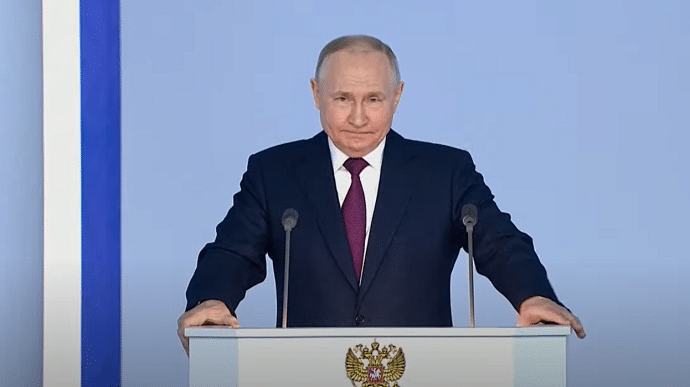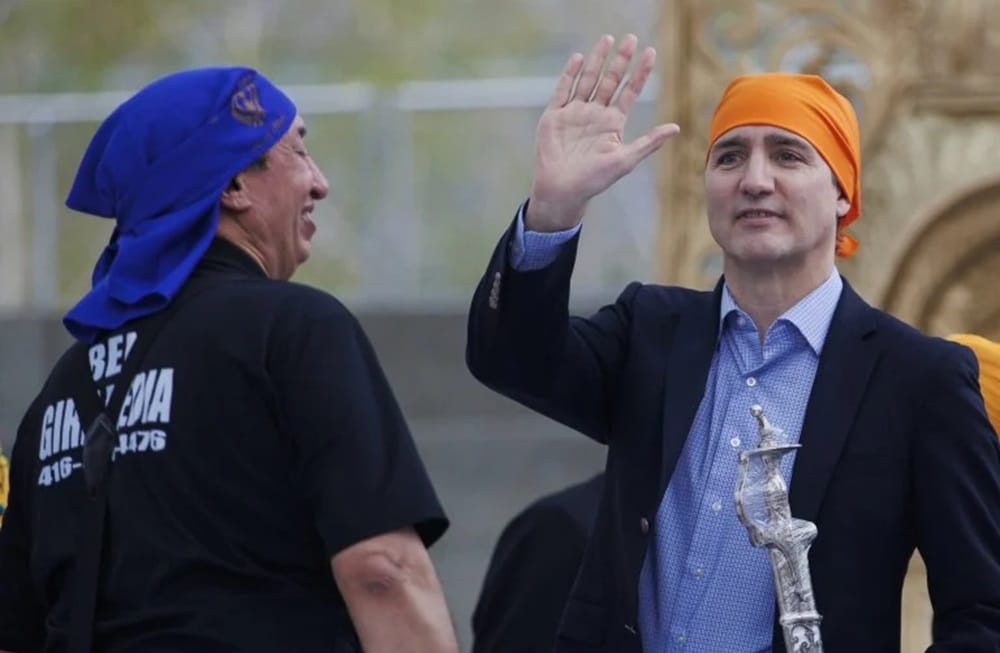News
Alcohol Death Toll Jumps 30% in the United States

According to new official data, the mortality rate related to alcohol increased by nearly 30% in the United States during the first year of the COVID-19 pandemic.
According to the Centers for Disease Control and Prevention, such deaths increased between 2020 and 2021. This week’s CDC data revealed more information on which demographics have the greatest death rates and which states have the highest percentages.
“Alcohol is frequently disregarded” as a public health issue, according to Marissa Esser, the CDC’s alcohol program director. “However, it is a major preventable cause of death.”
Research on Friday focused on more than a dozen “alcohol-induced” deaths attributed to drinking. Alcohol-caused liver or pancreas failure, alcohol poisoning, withdrawal, and other disorders are examples. Last year, there were over 52,000 such deaths, up from 39,000 in 2019.
In the two decades preceding the pandemic, the rate of such deaths had been increasing by 7% or less per year.
They were up 26% in 2020, to around 13 deaths per 100,000 Americans. According to the study’s lead author, Marianne Spencer, this is the highest rate in at least 40 years.
Excessive drinking of Alcohol
According to the report, such deaths are two and a half times more likely in males than women, but both increased in 2020. The rate remained highest for persons aged 55 to 64, but it increased considerably for some other categories, including a 42% increase for women aged 35 to 44.
The second study, published earlier this week in JAMA Network Open, looked at a broader spectrum of mortality that could be linked to alcohol, such as car accidents, suicides, falls, and malignancies.
According to data from 2015 to 2019, more than 140,000 of the broader categories of alcohol-related deaths occur each year. According to CDC experts, around 82,000 deaths result from excessive drinking over a lengthy period of time, and 58,000 are the result of causes related to acute intoxication.
According to the study, alcohol was responsible for up to one in every eight deaths among U.S. individuals aged 20 to 64. New Mexico had the greatest percentage of alcohol-related deaths, at 22%. Mississippi had the lowest rate, at 9%.
Excessive drinking is linked to long-term risks such as liver cancer, high blood pressure, stroke, and heart disease. Drinking while pregnant might result in miscarriage, stillbirth, or birth abnormalities. Health professionals say alcohol is a factor in up to one-third of major falls among the elderly.
It also puts others in danger through drunken driving or alcohol-fueled aggression. According to surveys, more than half of the alcohol sold in the United States is consumed during binge drinking episodes.
Even before the epidemic, alcohol use in the United States increased, with Americans drinking more than before Prohibition. However, mortality may have increased since the COVID-19 pandemic began for various reasons, including persons with alcohol-related disorders having more difficulty accessing medical care, according to Esser.
She said that the data suggests that initiatives to curb alcohol consumption, such as raising alcohol taxes and establishing legislation restricting where people can buy beer, wine, and liquor, are necessary.
Young American Deaths on the Rise
Politics
As Putin Begins Another 6-Year Term, He Is Entering A New Era Of Extraordinary Power In Russia

Just a few months shy of a quarter-century as Russia’s leader, Vladimir Putin, will sign a copy of the constitution on Tuesday, ushering in another six-year term as president with unparalleled powers.
Since becoming acting president on December 31, 1999, Putin has shaped Russia into a monolith, crushing political opposition, expelling independent journalists, and promoting an increasing adherence to prudish “traditional values” that push many in society to the margins.
His authority is so strong that other leaders could only stand on the sidelines while Putin began a war in Ukraine, despite predictions that the invasion would bring worldwide condemnation and harsh economic penalties, as well as cost Russia dearly in the blood of its men.
AP – VOR News Image
As Putin Begins Another 6-Year Term, He Is Entering A New Era Of Extraordinary Power In Russia
The war in Ukraine, in which Russia is making gradual but continuous battlefield advances, is the primary issue, and he shows no signs of reversing direction.
“The war in Ukraine is crucial to his current political ambition, and I see no reason to believe that will change. “And that affects everything else,” Brian Taylor, a Syracuse University professor and author of “The Code of Putinism,” told The Associated Press.
“It affects who’s in what positions, it affects what resources are available and it affects the economy, affects the level of repression internally,” he said.
In his February State of the Union address, Putin vowed to carry out Moscow’s objectives in Ukraine and do everything necessary to “defend our sovereignty and the security of our citizens.” He stated that the Russian military has “gained a huge combat experience” and is “firmly holding the initiative and waging offensives in several sectors.”
That will come at a high cost, potentially depleting funds for the massive domestic projects and changes in education, welfare, and poverty alleviation that Putin detailed in his two-hour presentation.
Taylor believed such initiatives were included in the address primarily for show rather than to indicate a genuine commitment to implement them.
Putin “thinks of himself in the broad historical terms of Russian territory, putting Ukraine back to where it belongs, and things like that. And I believe them outweigh any more socioeconomic-type programs,” Taylor added.
Suppose the battle does not result in absolute loss for either side, with Russia maintaining some of the territory it has already conquered. In that case, European governments fear Putin will be tempted to engage in additional military adventurism in the Baltics or Poland.
AP – VOR News Image
As Putin Begins Another 6-Year Term, He Is Entering A New Era Of Extraordinary Power In Russia
“It’s possible that Putin does have vast ambitions and will try to follow up on a costly success in Ukraine with a new attack somewhere else,” Harvard international relations expert Stephen Walt wrote in Foreign Policy. “But it is also entirely possible that his ambitions do not extend beyond what Russia has won — at enormous cost and that he has no need or desire to gamble for more.”
However, he said, “Russia will be in no shape to launch new wars of aggression when the war in Ukraine is finally over.”
Others argue that such a sensible worry may not prevail. According to Maksim Samorukov of the Carnegie Russia Eurasia Center, “Moscow is likely to make self-defeating mistakes driven by Putin’s whims and delusions.”
In a Foreign Affairs column, Samorukov stated that Putin’s age may influence his judgment.
“At 71, his awareness of his death undoubtedly influences his decision-making. A rising awareness of his short time influenced his catastrophic choice to attack Ukraine.
Overall, Putin may be entering his new term with less influence than he appears to have.
Russia’s “vulnerabilities are concealed in plain sight. “Now more than ever, the Kremlin makes decisions in a personalized and arbitrary manner, with no basic controls,” Samorukov stated.
“The Russian political elite have grown more pliant in implementing Putin’s orders and more obsequious about his paranoid worldview,” he stated in the letter. The country’s leadership “is at permanent risk of crumbling overnight, as its Soviet predecessor did three decades ago.”
Putin is certain to maintain his hostility against the West, which, he stated in his State of the Nation speech, “would like to do to Russia the same thing they did in many other regions of the world, including Ukraine: to bring discord into our home, to weaken it from within.”
Russia banned the fictitious LGBTQ+ “movement” last year, labeling it extreme in what officials claimed was a fight for traditional values such as those promoted by the Russian Orthodox Church against Western influence. Courts also prohibited gender transformation.
“I would expect the role of the Russian Orthodox Church to continue to be quite visible,” Taylor said. He also mentioned the social media anger that erupted during a party held by TV presenter Anastasia Ivleeva, in which guests were urged to arrive “almost naked.”
AP – VOR News Image
As Putin Begins Another 6-Year Term, He Is Entering A New Era Of Extraordinary Power In Russia
“Other actors in the system understand that that stuff resonates with Putin. … There were people interested in exploiting things like that,” he went on to say.
Although the opposition and independent media have nearly evaporated as a result of Putin’s repressive actions, there is still room for future movements to dominate Russia’s information space, such as continuing efforts to construct a “sovereign internet.”
The inauguration takes place two days before Victory Day, Russia’s most important secular festival honoring the Soviet Red Army’s seizure of Berlin in World War II and the war’s terrible difficulties, which cost the USSR around 20 million people.
The defeat of Nazi Germany is important to modern Russia’s character, as is Putin’s justification of the war in Ukraine as an analogous conflict.
SOURCE – (AP)
News
China Launches Long March-5 to the “Dark Side of Moon”

China has launched an unmanned spacecraft on a nearly two-month journey to gather rocks and soil from the moon’s far side, becoming the first country to undertake such an ambitious task.
China’s heaviest rocket, the Long March-5, lifted off at 5:27 p.m. Beijing time (0927 GMT) from the Wenchang Space Launch Center on the southern island of Hainan, carrying the Chang’e-6 probe weighing more than 8 metric tons.
China’s Chang’e-6 is entrusted with landing in the South Pole-Aitken Basin on the moon’s far side, which is continuously facing away from Earth, and retrieving and returning samples.
The launch is another significant milestone in China’s lunar and space exploration mission.
“It is a bit of a mystery to us how China has been able to develop such an ambitious and successful programme in such a short time,” said Pierre-Yves Meslin, a French researcher working on one of the Chang’e-6 mission’s scientific objectives.
In 2018, Chang’e-4 made China’s first unmanned moon landing on the far side. Chang’e-5 returned lunar samples for the first time in 44 years in 2020, and Chang’e-6 has the potential to make China the first country to retrieve samples from the moon’s “hidden” side.
Scientists, diplomats, and space agency officials from France, Italy, Pakistan, and the European Space Agency all attended the launch, which carried moon-study payloads on Chang’e-6.
However, no US groups requested for a payload place, according to Ge Ping, deputy director of the China National Space Administration’s (CNSA) Lunar Exploration and Space Program.
U.S. law prohibits China from collaborating with the United States’ space agency, NASA.
The Dark Side of the Moon
The far side of the moon, also known as the “dark side of the moon” despite receiving sunlight, is the hemisphere that always faces away from Earth. The Soviet Luna 3 spacecraft made the first observation of this strange region in 1959.
Unlike the near side, the far side lacks enormous, dark basins known as marias. Instead, hundreds of craters produced by asteroid collisions over billions of years blanket it.
The South Pole-Aitken Basin, an immense crater more than 1,500 miles wide and several miles deep, is one of the most visible landforms on the far side. This ancient impact basin is among the largest known crater formations in our solar system. The far side likewise has many mountains, ridges, and other harsh topography formed by cosmic collisions.
Studying the far side provides insights into the moon’s genesis and early history because it maintains impact records from the solar system’s turbulent childhood.
Scientists also intend to investigate it for potential resources and future lunar bases. With no atmosphere or magnetic field, the far side displays the wounds of endless meteor bombardments, exposing information about Earth’s only natural satellite that the near side lacks.
Source: Reuters
Apple Boss Tim Cook Makes Surprise China Visit
News
Canada’s RCMP Charge 3 Indian Men Over Sikh Leaders Murder

Canada’s Royal Canadian Mounted Police (RCMP) have charged three Indian men with the murder of Sikh separatist leader Hardeep Singh Nijjar last year, saying they were looking into whether the suspects had any ties to the Indian government.
Nijjar, 45, was killed in June outside a Sikh temple in Surrey, a Vancouver suburb with a sizable Sikh community. A few months later, Canadian Prime Minister Justin Trudeau alleged Indian government participation, sparking a diplomatic crisis with New Delhi.
The Royal Canadian Mounted Police identified the three individuals as Karanpreet Singh, 28, Kamalpreet Singh, 22, and Karan Brar, 22.
“We’re investigating their ties, if any, to the Indian government,” said Mandeep Mooker, an RCMP superintendent, during a televised press conference. The Indian mission in Ottawa did not reply to calls for comment from Reuters.
Nijjar was a Canadian citizen who campaigned for Khalistan, an autonomous Sikh country formed out of India.
The presence of Sikh separatist groups in Canada has long irritated New Delhi, which has dubbed Nijjar a “terrorist”.
Last Monday, the White House expressed worry over the apparent involvement of the Indian intelligence service in murder plans in Canada and the United States.
The RCMP claimed they coordinated with US law enforcement authorities, but did not provide any other information, and warned that more detentions might be forthcoming.
“The probe does not end here. We are aware that others may have been involved in this homicide, and we are committed to discovering and arresting each of these individuals,” said assistant RCMP commissioner David Teboul.
Canada-India Ties Strained
The three Indian nationals were arrested in Edmonton, Alberta, on Friday, according to police. They will arrive in British Columbia on Monday.
Trudeau revealed in September that Canadian officials were looking into accusations linking Indian government agents to the murder. New Delhi dismissed Trudeau’s allegation as ludicrous.
“We welcome the arrests, but this raises a lot of new questions,” said Balpreet Singh, legal counsel and spokeswoman for the Canada-based World Sikh Organization advocacy group.
“Those who have been arrested are part of a hit squad but it’s clear that they were directed,” he added in a telephone interview.
Canada had pressed India to participate with its probe. Last November, US authorities said that an Indian government officer orchestrated the plot to assassinate Gurpatwant Singh Pannun, a Sikh separatist and dual citizen of the United States and Canada.
“While today’s action… is a step forward, it only scratches the surface,” Pannun said in a statement, calling for action to “dismantle the networks that enable and perpetuate such crimes against Canadians on Canadian soil”.

Trudeau’s Presence at Separatist Sikh Rally Enrages India: Getty Images
India Angered Over Trudeau
Meanwhile, analysts say Prime Minister Justin Trudeau‘s move shown “no appreciation of Indian concerns in Canada,” with the apparently ill-advised travel expected to discourage New Delhi from improving relations with Ottawa.
Relations between the two sides have deteriorated in recent months as a result of allegations by Trudeau’s administration that Indian intelligence agents were involved in the 2023 murder of Canadian citizen and Sikh separatist leader Hardeep Singh Nijjar.
Nijjar was involved in the 1980s and early 1990s Khalistan movement, which sought to establish an independent Sikh nation in northern India’s Punjab state. Today, the activists are largely from the Punjabi overseas diaspora, many of whom have migrated in the North American country. India has often complained to Canada about the actions of Sikh hardliners.
According to The Times of India, Indian intelligence officials were particularly concerned about the presence of “Modi Wanted” posters purportedly placed at the Toronto rally by the secessionist group Sikhs For Justice (SFJ) in retaliation to Nijjar’s murder.
While New Delhi has frequently criticized Trudeau for failing to rein in Khalistani separatists and engaging in “vote bank politics” with the Punjabi diaspora, experts disagreed on whether the government overreacted in order to acquire votes in the ongoing Indian elections.
-
Politics5 months ago
Unveiling the Power and Influence of The Conservative Treehouse
-
Sports4 months ago
Saints’ Aggressive Play-Calling Ends Up Coming Back To Hurt Them In Loss To Rams
-
Business4 months ago
Nike Says It Will Cut $2 Billion In Costs In A Major Warning For Consumers
-
News5 months ago
The Intersection of Adult Video Sites and Modern Liberalism
-
Tech5 months ago
What is Proprietary Technology: Understanding Definition, Examples, and Advantages
-
Politics5 months ago
Claudine Gay: Harvard President Won’t Lose Job Over Congress Row













































